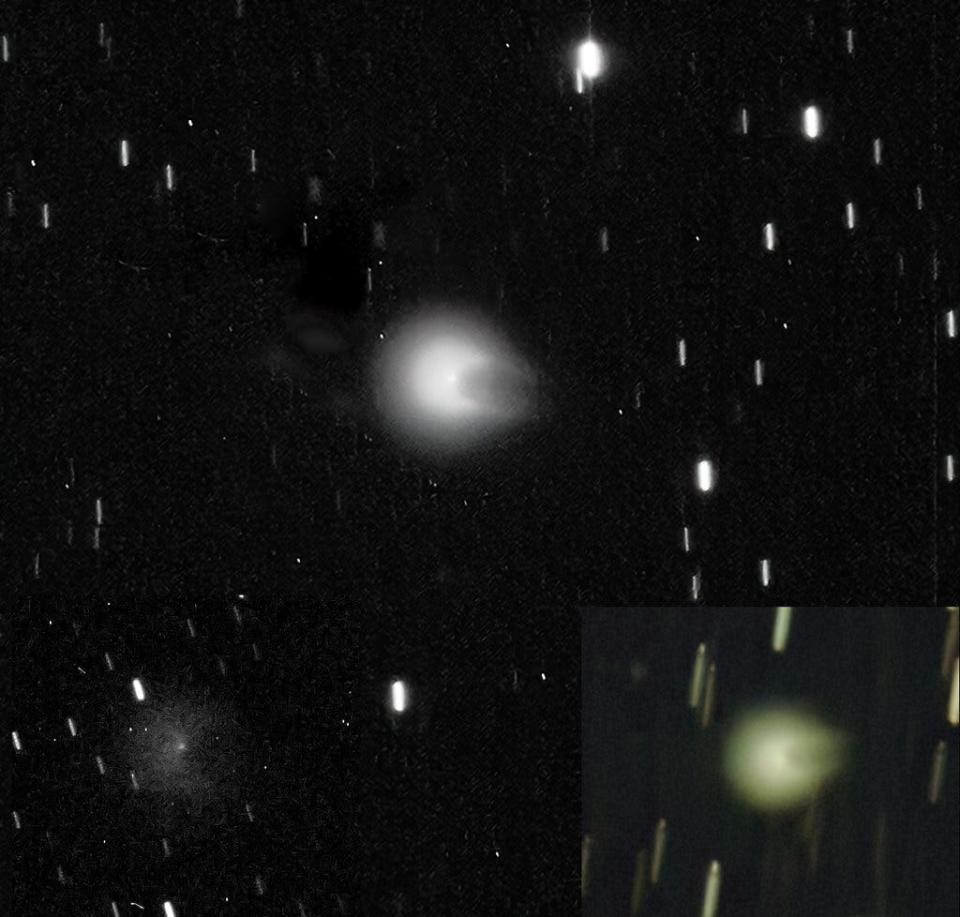Horned 'devil comet' eruption may coincide with April 8 total solar eclipse: What to know
As if the spectacular sight of a rare total solar eclipse isn't enough, skygazers may catch a glimpse of another "horned" celestial display that could coincide on April 8 with the moon's orbit in front of the sun.
The so-called "devil comet," named for the horned-shaped gas and dust spewed in its wake, has the potential to become visible to the naked eye on the same day of the Great American Eclipse, astronomers say.
Here's what to know about the "devil comet," officially known as 12P/Pons-Brooks, and how to look for it on April 8.
Best photos of space so far in 2024: From spiral galaxies to volcanic eruptions on Jupiter moon, see these amazing space images
Why is it called a 'devil comet?'

Officially, the comet is named for the astronomers credited with its first two sightings: Jean-Louis Pons in 1812 and William Robert Brooks in 1883, according to The Sky Live, which provides information and charts for celestial objects.
Unofficially, it earned its demonic nickname not because it's malevolent or dangerous to Earth in any way, but because it simply resembles devil horns. Others have also likened 12P's appearance to the Millenium Falcon spaceship from "Star Wars," though George Lucas or Disney may see any related nickname as a copyright infringement.
So, how does that distinctive devil horn flare take shape?
Sun-orbiting comets, which are composed of dust and ice, are distinctive for their long, streaming tails. Those tails form as comets heat up upon their approach to the sun, which sends gases and dust behind them in a glowing trail that can stretch for millions of miles, according to NASA.
At the heart of every comet is a frozen core of dust and ice called a nucleus. As the comet approaches the sun, the ice begins to turn to gas that can burst out of the comet in a cloud of dust that creates a huge, fuzzy cloud around the nucleus called the coma.
The shape of 12P/Pons-Brooks's coma has created the appearance of horns to ground-based observers, giving the celestial body its "devil comet" nickname.
Will we see 12P/Pons-Brooks during the eclipse?

The "devil comet" makes a 71-year orbit around the sun, a length that classifies it as a Halley-type comet.
At the moment, only those with powerful telescopes can spot it.
But that may soon change as the dazzling comet makes its closest orbital approach to the sun – known as its perihelion – on April 21. As it hurtles harmlessly toward Earth, 12P will be fairly close to the sun during the total solar eclipse of April 8, according to EarthSky.org.
Between now and then, forecasters expect the comet's brightness to increase so much that it could become visible to the naked eye just in time for the eclipse. The comet is notorious for its unpredictable surges in brightness, but if one of the ice geysers adorning its surface were to erupt, the material it spews would reflect the sun and "catapult it into the realm of magnificent," according to SpaceWeather.com.
When the moon completely blocks the sun's disk on April 8, ushering in the nighttime-like darkness known as totality, skygazers will be able to see the outmost layer of the sun's atmosphere known as the corona.
Observers may also be able to see the two brightest planets, Venus and Jupiter, pop into view on either side of the sun. If comet Pons-Brooks is bright enough, spectators will be able to glimpse it between Jupiter and the sun, according to EarthSky.org.
What else should I know about the total solar eclipse?
Tens of millions of Americans reside on the eclipse's 115-mile-long path of totality through North America.
The Great North American Eclipse, as it's known, will trace a narrow path of totality across 13 U.S. states. Small parts of Tennessee and Michigan will also experience the eclipse, NASA says.
Unlike partial solar eclipses, a total eclipse offers spectators a unique opportunity to gaze upon it with the naked eye, but only when the moon completely blocks out the sun and darkness falls. Until then, proper safety eyewear is still a must, according to NASA.
Certified eyewear is held to an international safety standard and is 100,000 times darker than most sunglasses to block nearly all visible, infrared and ultraviolet light. To make it easy, the American Astronomical Society maintains a curated list of approved vendors.
If you want to see the time and duration for when totality would occur near each of these locations, see these interactive maps.
And you may want to see it while you can: For North America, the next total solar eclipse won't be until 2044, according to NASA.
Eric Lagatta covers breaking and trending news for USA TODAY. Reach him at [email protected]
This article originally appeared on USA TODAY: 'Devil comet' may be visible from Earth during total solar eclipse
